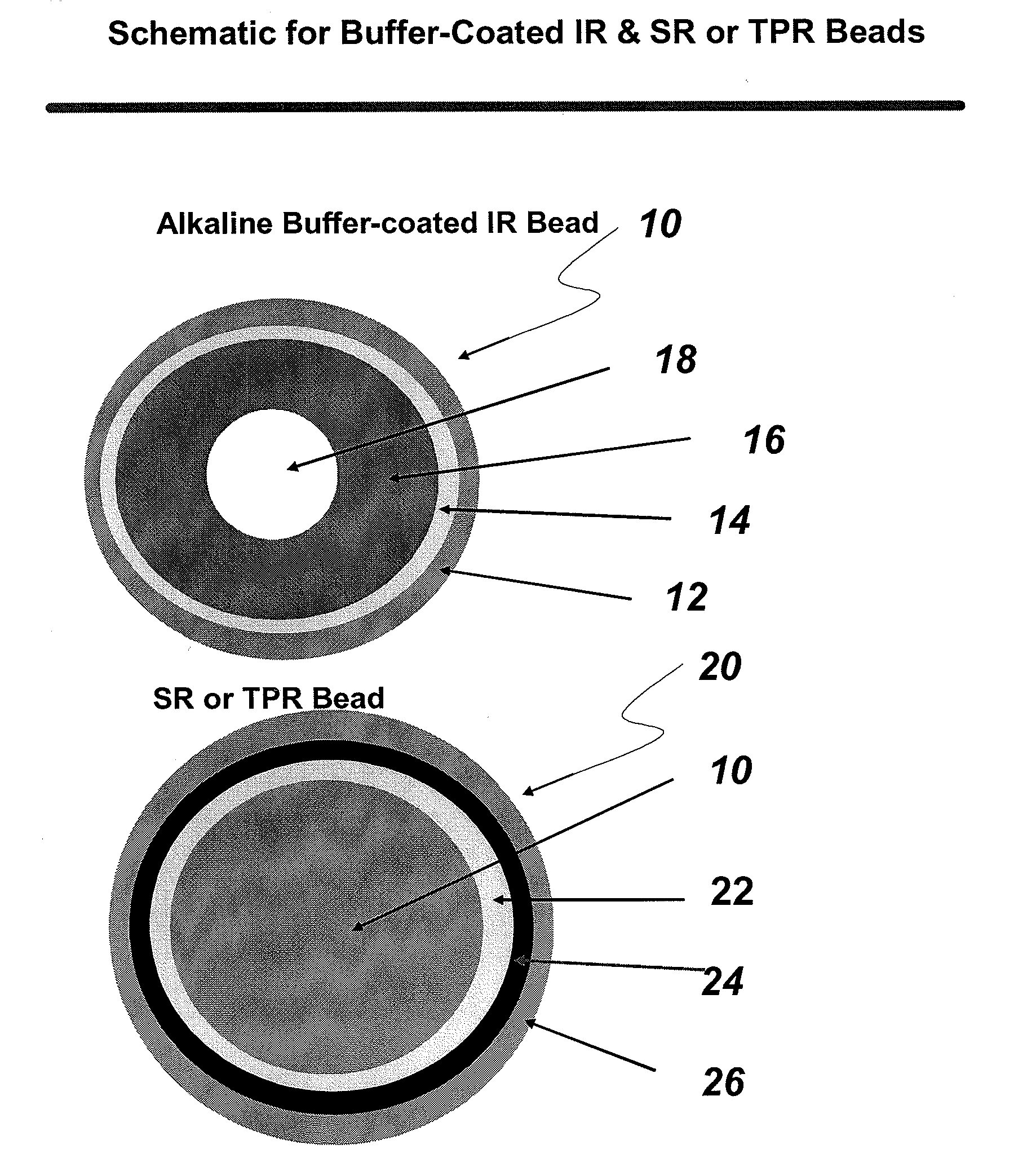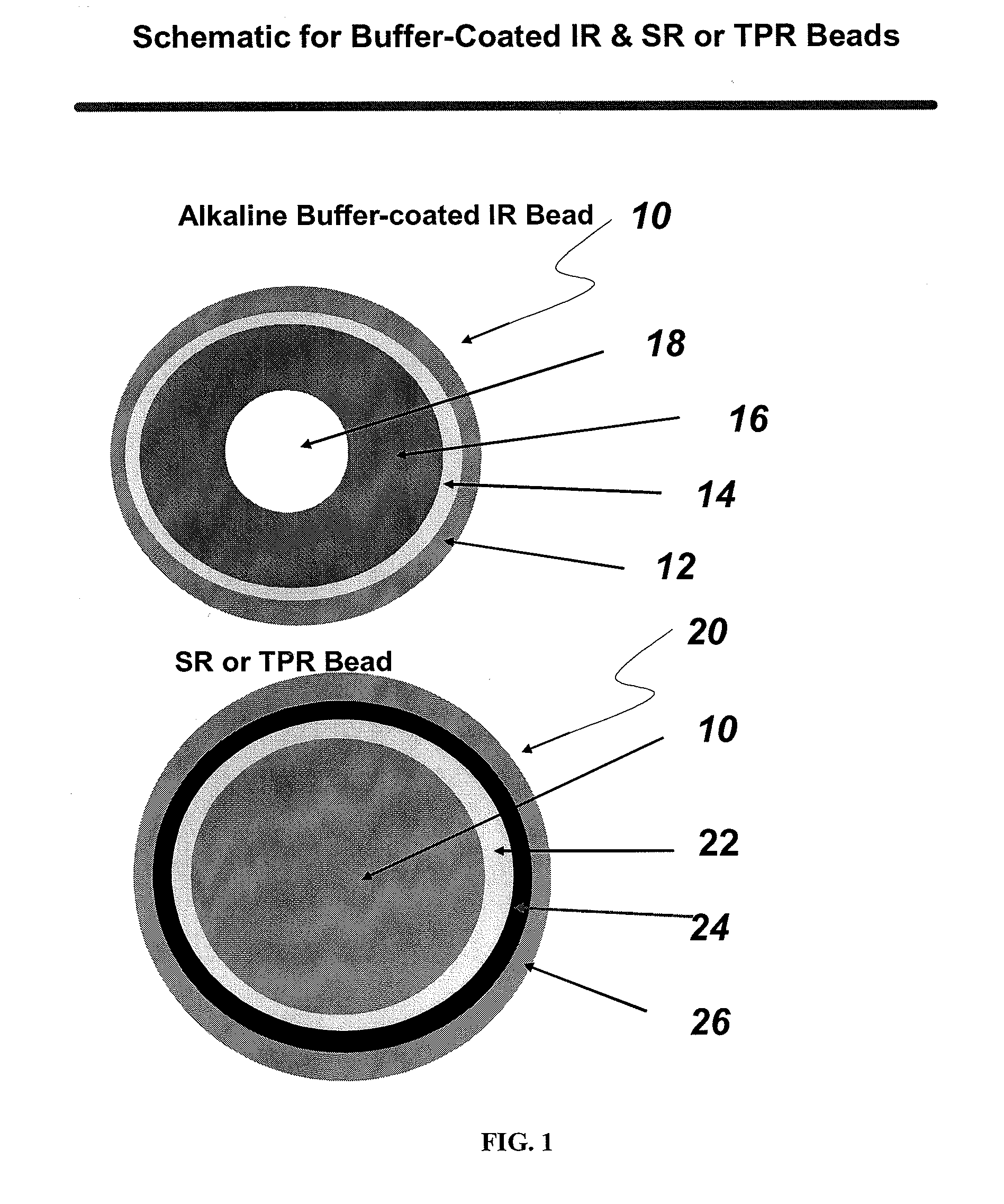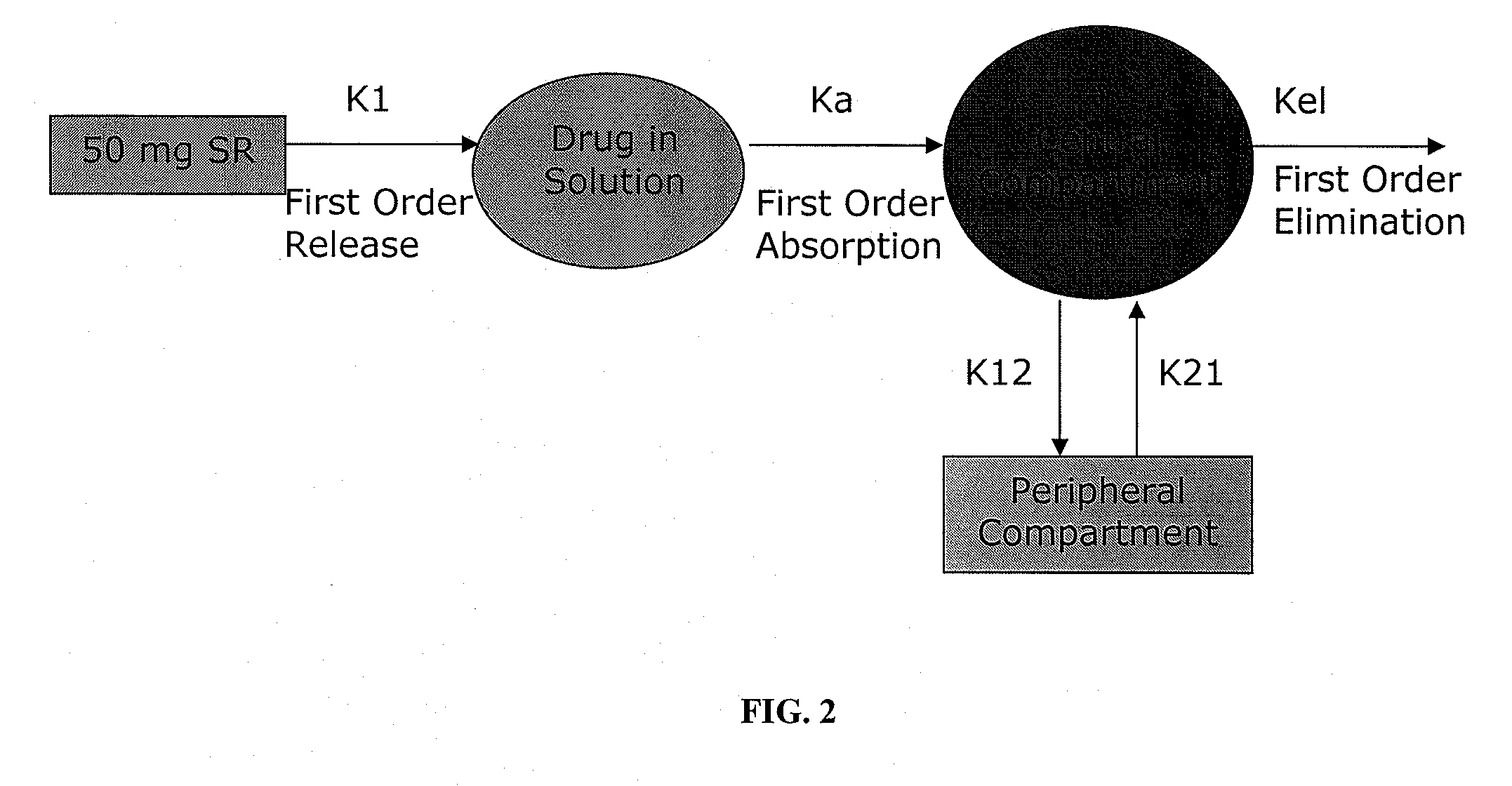Compositions comprising weakly basic drugs and controlled-release dosage forms
a technology of weakly basic drugs and dosage forms, which is applied in the direction of drug compositions, antibacterial agents, metabolic disorders, etc., can solve the problems of drug release difficulty, dose dumping, and polymer failure to provide a single-time target pharmacokinetic profile suitable for polymers
- Summary
- Abstract
- Description
- Claims
- Application Information
AI Technical Summary
Benefits of technology
Problems solved by technology
Method used
Image
Examples
example 1
Deconvoluted In Vitro Drug Release Profiles for Weakly Basic Drug
[0070]A pharmacokinetic evaluation can be undertaken to identify a set of theoretical in vitro drug release profiles that would allow for the once or twice daily dosage form of weakly basic drugs. Using human plasma concentration-time data upon oral single dose administration or at steady state and / or upon an intravenous (IV) profile (if available), the one or two compartmental pharmacokinetic (PK) model (e.g., a two-component model is shown in FIG. 2). Both oral (PO) and IV data can be fitted simultaneously to the PK model. Using WinNonlin Software, PK parameter estimates and predictions of PO and / or IV data are performed to generate equations for simulated profiles. Formulations are developed with in vitro drug-release profiles that mimic the simulated, i.e., deconvoluted in vitro profiles or encompass the target profile window. The formulations are then tested in PK studies in adult healthy subjects.
example 2
2.A IR Beads Containing Weakly Basic Drug
[0071]A binder polymer is slowly added to a solvent system (e.g., water, acetone, ethanol or a mixture thereof) to prepare a binder solution. The weakly basic drug is slowly added to a solvent system until dissolved. The binder solution is then added to the drug solution, followed by mixing. Alternately, the binder and the drug are sequentially added to dissolve. A fluidized bed coating apparatus, e.g., a Glatt GPCG 3 (e.g., equipped with a 7″ bottom spray Wurster 7 13 / 16″column, ‘C” bottom air distribution plate covered with a 200 mesh product retention screen) is charged with (e.g., 60-80 mesh) sugar spheres, which are then sprayed with the binder / drug solution. The coated sugar spheres are then dried to drive off residual solvents (including moisture), and can be sieved (e.g., through 35 and 80 mesh screens) to discard oversized particles and fines.
2.B Disodium Phosphate Anhydrous (DPA) Buffer Layering
[0072]Anhydrous disodium phosphate is ...
example 3
3.A IR Beads Containing Weakly Basic Drug
[0076]A binder polymer is slowly added to a solvent system (e.g., water, acetone, ethanol or a mixture thereof) to prepare a binder solution. The weakly basic drug, clonidine, a phenylamino imidazoline derivative, is slowly added to the binder solution to dissolve while mixing. A fluidized bed coating apparatus, e.g., a Glatt GPCG 3 (e.g., equipped with a 7″ bottom spray Wurster 7 13 / 16″column, ‘C” bottom air distribution plate covered with a 200 mesh product retention screen) is charged with microcrystalline cellulose spheres ((e.g., Cellets 100 from Glatt), which are then sprayed with the binder / drug solution. The IR beads are then dried to drive off residual solvents (including moisture), and can be sieved (e.g., through 40 and 100 mesh screens) to discard oversized particles and fines.
3.B Disodium Phosphate Anhydrous (DPA) Buffer Layering
[0077]Anhydrous disodium phosphate is added to purified water under stirring until dissolved. A fluidi...
PUM
| Property | Measurement | Unit |
|---|---|---|
| Temperature | aaaaa | aaaaa |
| Fraction | aaaaa | aaaaa |
| Time | aaaaa | aaaaa |
Abstract
Description
Claims
Application Information
 Login to View More
Login to View More - R&D
- Intellectual Property
- Life Sciences
- Materials
- Tech Scout
- Unparalleled Data Quality
- Higher Quality Content
- 60% Fewer Hallucinations
Browse by: Latest US Patents, China's latest patents, Technical Efficacy Thesaurus, Application Domain, Technology Topic, Popular Technical Reports.
© 2025 PatSnap. All rights reserved.Legal|Privacy policy|Modern Slavery Act Transparency Statement|Sitemap|About US| Contact US: help@patsnap.com



